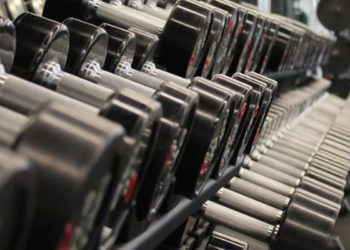Children with congenital heart disease exhibit seasonal variation in physical activity
1. Children with congenital heart disease experience seasonal peaks (late spring and autumn) and dips (winter and summer school holidays) in physical activity.
Evidence Rating Level: 1 (Excellent)
Occurring in 1 of 100 live births, congenital heart disease (CHD) is the most common congenital defect in newborns. WIth survival rates increasing in children with moderate to complex forms of CHD, so is the prevalence of CHD across all age ranges. Due to the increased risk of cardiovascular events that CHD confers, physical activity is an important, modifiable determinant of long-term cardiovascular health and quality of life. Consequently, the trend of declining physical activity as children with CHD age is concerning, but is difficult to assess. Understanding seasonal patterns in physical activity for this population is also important in providing appropriate recommendations. This prospective cohort study was conducted at BC Children’s Hospital in Vancouver, Canada, with 156 participants, children and adolescents aged 9-16 years old. Participants wore commercial activity trackers (Fitbit Charge 2), which collected daily step count continuously for 1 year, and also completed physical activity questionnaires (PAQ) and wore accelerometers to estimate daily mean moderate-to-vigorous physical activity (MVPA). Fitbit data illustrated clear peaks in physical activity in late spring and autumn, with a severe dip in July and August corresponding to local school holidays and a long trough during colder winter months. 23% of children overall met the daily recommended step goal (> 12 000 steps/day), with 36% in spring, 19% in summer, 30% in autumn, and 12% in winter (p<0.001). No significant differences were found between seasons in either mean PAQ score or MVPA. 26% of children achieved at least 60 minutes of MVPA daily (33%, 11%, 20%, and 39% in spring, summer, autumn, and winter). While walking and running were the most common activities throughout the year, the questionnaires found unstructured activity (ie tag) decreased during school holiday and structured activities (ie basketball, soccer) were more prevalent during the school year. These results suggest promoting season-specific activities and targets to increase activity levels, such as encouraging more family-based activity during school holiday and indoor basketball during colder months. As well, the Fitbits met with higher compliance than traditional accelerometers, while questionnaires alone may not provide valid estimates of physical activity outside the school year. Thus, commercial activity trackers may be a powerful tool in future studies to capture physical activity data continuously and understand long-term variations.
Click to read the study in PLOS ONE
Image: PD
©2020 2 Minute Medicine, Inc. All rights reserved. No works may be reproduced without expressed written consent from 2 Minute Medicine, Inc. Inquire about licensing here. No article should be construed as medical advice and is not intended as such by the authors or by 2 Minute Medicine, Inc.







